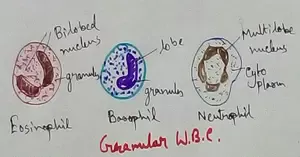Classification of Rocks
We will discuss here about the classification of rocks and the processes of their formation. Rocks, whatever be its size, shapes and colors have a grainy texture since these are formed of crystals of natural minerals. Primary rocks, produced from lava, are the ancestors of all other rocks.
In a railway track we find that the track is full of blackish gray or brownish stones all along it. Those huge quantity of stones are pieces of rocks.
Rocks are available in different sizes, shapes and colors but they all have a grainy texture. This is because all rocks are originated from naturally occurring minerals. So, rocks can be defined as naturally occurring masses of solid minerals of different kinds in varying proportions.
The maximum solid portion of the Earth is made up of rocks. We see huge masses of exposed rocks in the form of mountains and hills. But the major portion of it remains under the crust of soil.
From
the grinding block and morter of our kitchen to the beautiful walls and floors
of the Taj Mahal we can see different types of stones everywhere around us.
These stones have been collected from different types of rocks.
According to the formation we can classify the rocks into three types:
1. Igneous rock
We know that the centre of the Earth is still full of hot molten material called magma. Millions of years ago the outer layer (crust) of this hot molten material was gradually cooled down and thus became to form the primary rock. In this process the first rock was formed on the Earth. This rock is called primary rock because this type of rock is the oldest one and original since the formation of the Earth. About 80% of the Earth’s crust is made of this type of rock. Ancient mountains, plain lands and the floor of the oceans were formed by this rock. Even now, when pressure increases in the magma chamber, it breaks the outer crust of the Earth and erupts as a volcano. Magma, the molten rock, is called lava once it has emerged on to the surface of the Earth through the crater of a volcano. Gradually the lava loses heat and becomes hard as a rock. Geologists name it as igneous rock. Like primary rocks, these rocks are very hard and do not get weathered easily. Granite, Basalt, Obsidian, Pumice are some igneous rocks.
2. Sedimentary rock
Rain and wind drive away the finer matters from upper crust of the Earth. Streams and rivers carry mud, sand and pebbles. All these materials are deposited elsewhere in layers. Due to the pressure built up by self-weight of these layers for a prolonged period, the materials at the lower side got hardened to form sedimentary rocks. These rocks are mostly formed by silt, which is the aggregate of deposits, settled at the bottom of rivers and oceans. Remains of many plants and animals got buried under this silt in ancient times. Due to huge pressure, these organic remains got transformed into rocks, which are known as fossils.
Sedimentary rocks are formed in layers so they are also known as stratified rocks .The Himalaya’s is made of these type of rock. Sand stone, Lime stone dolomite are some common sedimentary rocks.
3. Metamorphic rock
Due to huge pressure and heat many sedimentary and a few igneous rocks undergo physical and chemical changes. As a result some new types of rocks are formed. These are called metamorphic rocks, in this process lime stone, shale and sand stones were modified into Marble, Slate and Quartz respectively.
From Classification of Rocks to HOME PAGE
Recent Articles
-
Formed Elements of Blood | Erythrocytes | ESR |Leukocytes |Neutrophils
Jan 15, 26 01:25 AM
Formed elements formed elements are constitute about 45 % of blood afeias haematocrit value packed cell volume mostly of red blood corpuscles and are of 3 types- erythrocytes, leukocytes and blood pla… -
What Is Plasma? | Blood Plasma | Proteins | Nutrients | Cholesterol
Nov 07, 25 10:29 AM
Blood is a mobile fluid which is a connective tissue and is derived from the mesoderm like cell any other connective tissue. Colour of blood is reddish and that flows inside the blood vessels by means… -
Disorders of Respiratory System | Tuberculosis | Pleurisy | Emphysema
Oct 28, 25 11:39 PM
Tuberculosis is very common disease and is caused by a type of bacteria called Mycobacterium tuberculosis. This disease causes different trouble in the respiration and infection of several parts of th… -
Regulation of Respiration | Respiratory Centres | Inspiratory Area |
Oct 14, 25 12:13 AM
Respiratory Centre is the area that controls the rate of respiration and it is observed to be located in medulla oblongata and pons. Respiratory Centre has the following will dispersed components like… -
Explain Transport of Gases | External Respiration | Tissue Respiration
Oct 09, 25 11:35 PM
In humans gaseous exchange is completed in the following ways the steps are - External Respiration or Breathing - Breathing in false taking in of Oxygen and giving out of carbon dioxide in the body. M…





New! Comments
Have your say about what you just read! Leave me a comment in the box below.